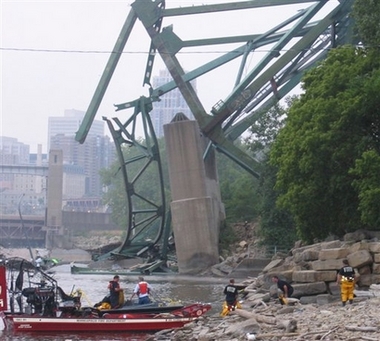
This New York Times story tells us that…
More than a quarter of the nation’s bridges are structurally deficient or functionally obsolete. Leaky pipes lose an estimated seven billion gallons of clean drinking water every day. And aging sewage systems send billions of gallons of untreated wastewater cascading into the nation’s waterways each year.
These are among the findings of a report to be released Wednesday by the American Society of Civil Engineers, which assigned an overall D grade to the nation’s infrastructure and estimated that it would take a $2.2 trillion investment from all levels of government over the next five years to bring it into a state of good repair.
The society had planned to release the report in March, but moved it up to try to influence the debate over the $825 billion economic stimulus bill being negotiated by the Obama administration and Congress. Advocates for greater investment in public works projects have expressed disappointment that less than a third of the current proposal — which could be approved by the House on Wednesday — would be spent on infrastructure, and an even smaller part of that would go toward traditional concrete-and-steel projects like roads and transit.
I think we owe a debt to the Society here for helping to shape this debate before it gets too lost in typical Repug obstruction and fawning over tax cuts; as Paul Krugman said, the Repugs will never sign off on the stimulus anyway. That’s it – we’re done here with that, OK?
Update: See? So much for bipartisanship (h/t Atrios).
And as I noted here previously, Norway just announced its own stimulus bill with substantially more infrastructure spending than ours at this moment (and by the way, as noted here, those polled in this country “strongly back” infrastructure spending), and this tells us that Canada is prepared to spend $7 billion in that effort (this article tells us that “countries will spend approximately $30 trillion over the next two decades on new roads and similar projects and to fix existing infrastructure,” according to CIBC World Markets economist Benjamin Tal).
Want more proof that such spending is a good thing? I give you former White House Press Secretary Dana Perino, who tells us here that “it’s not really a stimulative way to get the economy going.”
I rest my case (and I have to admit that this is a welcome point of view from an unlikely quarter, if you will, though half a loaf may be better than none at the moment).